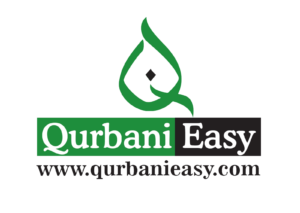

Here is a general overview that distinguishes Qurbani. There are three types of sacrificial offerings (sacrifices) in Islam: Eid al-Adha Qurbani, Aqiqah Qurbani. and Saqah Qurbani There will be a detailed description of each type. It specifies the objectives, requirements and important differences.
Eid-ul-Adha Qurbani also known as Udhiya is a popular sacrifice that is made by Muslims on Eid-ul-Adha. This event reminds us of the willingness of Prophet Ibrahim (Abraham) to sacrifice his son Ishmael (Ishmael) in obedience to Allah. In appreciation of his dedication, Allah replaced a sheep for the actual sacrifice. Every year this significant event is celebrated through the Qurbani ritual slaughter which Muslims all over the world perform during Eid al-Adha.
The purpose behind Eid ul-Adha Qurbani is to remember Allah and the Greatness of Abraham (as) through his willingness to sacrifice everything for Allah.
It usually falls on the tenth, eleventh and twelfth days of the Islamic month of Dhu al-Hijjah each year.
Requirements: These sacrificial animals were invariably sheep, goats, cows or camels, and had to be healthy and of a certain age.
Spread: The meat from the Qurbani i.e., sacrifice of Eid ul Adha is mostly divided into three equal parts. One part is eaten by yourself and your family; one-third donated to friends, relatives and neighbors who did not sacrifice a pet for Eid, while the remaining one-third is given to the poor.
Aqiqah is a special sort of sacrifice offered at the start of a toddler, as an expression of gratitude to Allah for the blessing of the kid. Aqiqah is a recommended (mustahabb) exercise in Islam, which means that bringing a toddler into the circle of relatives and network.
Purpose: The motive of the Aqiqah offering is to express gratitude for the present of a infant and to invite for Allah’s safety for them. It manner that the kid’s lifestyles is in submission to Allah.
Timing: Aqiqah is preferably carried out on the seventh day after the birth of a toddler. If this isn’t always feasible, it could be completed in any subsequent 7th (14th, twenty first, and many others.), or whenever it is financially possible.
Requirements: The animal selected for the aqiqah is often a sheep or goat. Two animals are advocated for a boy, but one animal is sufficient for a lady, although this is not obligatory.
Distribution: Meat from Aqiqah may be disbursed to families, buddies and those in need, or it can be used for own family gatherings. Unlike Eid ul-Adha Qurbani, there is no strict requirement to divide the meat into precise portions.
Sadaqah Qurbani or Sacrifice is an additional form of Qurbani that can be performed for various purposes at any time throughout the year. Sadaqah Qurbani is a voluntary act that is not bound by any specific occasion or ritual.
Purpose: This Qurbani serves as a means to obtain the blessings of Allah, to show gratitude, or to fulfill a vow (najar). It can be done as thanksgiving for receiving rewards or for protection and health.
Timing: There is no fixed time for Sadaqah Qurbani and it can be done at any time when a person wants to give Sadaqah. It is usually performed during challenging times, to recover from an illness, or as part of a promise to Allah.
Requirements: Sadaqah Qurbani can involve any acceptable animal, such as goats, sheep, cows or camels. Unlike Eid-ul-Adha and Aqiqah, there is more flexibility with the needs and quantities of animals used.
Distribution: The meat is generally distributed among the poor and needy, as it is an act of charity. The person performing the sadakah sacrifice may also consume some of the meat if desired, but it is generally given entirely as charity.
Since all three types of Qurbani serve as offerings in Islam, their purpose, timing, requirements, and distribution methods differ.
Objective:
Eid ul-Adha Qurbani: A commemorative sacrifice made to show respect for the devotion of Prophet Ibrahim.
Aqeeqah: Celebration and expression of gratitude for childbirth.
Sadaqah Qurbani: Voluntary charitable donations for various personal reasons. or the fulfillment of an oath
Rhythm: Eid ul-Adha: Especially performed during Eid ul-Adha (10th to 12th Dhu al-Hijjah). Aqeeqah: It should not be done on the seventh day after birth or at any convenient time thereafter.
Sadaqah Qurbani: Can be done all year round. Requirements for animation: Eid ul-Adha: Generally assigned to a sheep, goat, cow or camel that meets certain criteria.
Aqiqah: Typically a goat or sheep. There are two animals recommended for boys and one for girls.
Sadaqah Qurbani: More flexible and animations may vary depending on what can be afforded.
Meat sales: Eid ul-Adha: Divided into three parts – for yourself, relatives/friends and the poor. Aqeeqah: Distributed to family, friends, or the needy and often used for family gatherings.
Sadaqah Qurbani: Mostly given for charity or poverty. And wanted to keep some possums to use as personal.
Each type of Qurbani – Eid ul-Adha, Aqeeqah and Sadaqah – has a unique purpose and meaning in Islam. It reflects different aspects of devotion, gratitude and charity. Eid ul-Adha Qurbani is mandatory for those who can afford it, while Aqeeqah is highly recommended for newborns and Sadaqah Qurbani is still compulsory. Voluntarily show kindness these practices reinforce Muslim values of sacrifice, gratitude, and generosity, promoting sharing.